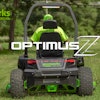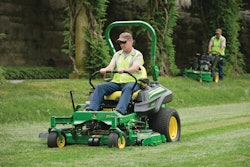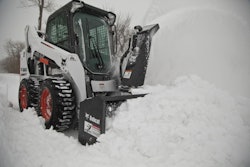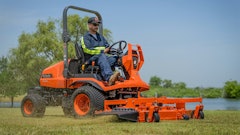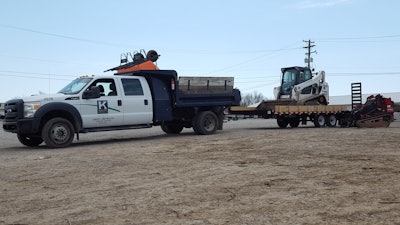
As a rule, landscape management companies, those that provide maintenance and installation services, have two completely different trailer setups for both offerings. Lexington-based Klausing Group is no exception. In business since 1992, the company provides grounds management and landscape construction services to a wide variety of commercial accounts in both Greater Lexington and Greater Louisville.
Construction superintendent Tyler Taylor has been with Klausing Group for four years and currently oversees two construction crews. Each is called on to perform major installs and bid build work. “We have two new 20-ft deck-over trailers with dove tails,” he explains. “How each is equipped depends on the day. They could be hauling plant material or a Toro Dingo, with several attachments, a Bobcat T590, also with an array of attachments, or a trencher for irrigation.”
His favorite piece of equipment is the Dingo, because, as he notes, it’s so versatile and can be used in big and small areas alike. Whereas the Dingo is his favorite, the skid steer is a requisite for lifting anything over 1,000 pounds, including pallets full of sod. It, too, is versatile, when outfitted with a pallet fork, smooth bucket, tooth bucket, auger, or a Harley rake for finished grading. The trailer also has a tool box filled with a variety of hand tools.
The outfit is hauled from site to site with a Ford F-450 crew cab, with a 10-ft dump bed, 4-ft side boards, and a cab overhang for strapping on a wheel barrow.
Nine-year company veteran Jorge Tolentino, is one of six maintenance crew leaders. “Our teams go out with either 20 or 25-ft enclosed trailers, each pulled by a four-door Ford F-350,” he relates. “A typical crew would carry four mowers, including two Exmark zero-turns with 60-inch decks, one 60-inch midsize with a Velke, and a 30-inch push mower. Also, on board is an array of Stihl hand-held equipment, spray tanks, a big trash can, and a tool rack.
“Our trailers are equipped with everything we need for the day. There’s a 40-gallon fuel tank for mowers and a 5-gallon can of mixed gas for hand-held equipment.”
Tolentino’s favorite piece of equipment is the 60-inch Exmark zero-turn, a machine, he says, that mows a lot of grass in a hurry. Surprisingly, the most critical item on his trailer is neither a mower nor a hand-held tool Instead, it’s spare string line for trimmers or other small replacement parts that can save the day. Says Tolentino, “Going back to the shop for something as small as string line is time consuming and can kill your budget.”
There’s another item on board that’s critical, especially on hot summer days, he emphasizes. That’s a five-gallon water tank to keep crew members hydrated.
Last Word
What criteria are among the most important when buying new equipment? Company founder and president Roscoe Klausing says he looks for manufacturers that offer a family of products that can help reduce the number of makes and models in their inventory. Good dealer support is a requisite, as well. Although his company hasn’t put a high priority on purchasing energy-efficient equipment, he notes that continually updating the fleet with late model equipment and vehicles increases fuel-efficiency while keeping emissions as the lowest end of the spectrum.

